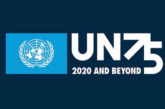(4-5 December 2013, Shillong, Meghalaya, India)
Organized by UN-ESCAP South and South-West Asia Office, ESCAP Transport Division in collaboration with the Asian Development Bank and the Government of Meghalaya State of India, organized the Policy Dialogue on Economic and Transport Development in Border Areas of eastern South Asia on 4-5 December 2013 at Shillong in Meghalaya, India, to provide an opportunity to exchange experience in the economic and transport development of border areas. It will include a one-day field visit to a border crossing. It was expected to bring together policy makers from ministries in charge of economic development, transport, trade and commerce, finance (Customs) and border control, and local governments in the border areas of Bangladesh, Bhutan, India and Nepal.
Remote border areas are junctions for connectivity between countries and are very often also poorer places in most countries. In order to alleviate poverty and develop trade and transport connectivity in border areas, many countries opened borders for the purpose of trade and transport, granting those areas the status of border special economic zones. Many such zones have been established in North-East, South-East and Central Asia and have become trade centres, transport hubs and cooperation centres, greatly promoting local economic development and poverty alleviation in border areas.
South and South-West Asia remains one of the least integrated sub-regions in the world as measured by proportion of intraregional trade, investment, transport connectivity and people-to-people contacts. The proportion of intra-regional trade in South Asia at below 6 per cent is lowest among different sub-regions.
Against this backdrop, the development of border special economic zones in eastern South Asia would greatly contribute to poverty alleviation, investment and trade promotion, cross-border and transit transport, and development of the local economy. Such zones have the potential to become important platforms and hubs for cooperation between neighbouring countries.
Dr Arvind Kumar, President, India Water Foundation, presented a paper on “Catapulting Eastern South Asia from Periphery to Mainstream”, at the conference. Dealing with the existing realities of water in the region, the paper stated that with more than 21 percent of the world’s population, the South Asia region (comprising of Afghanistan, Bangladesh, Bhutan, India, the Maldives, Nepal, Pakistan, and Sri Lanka) has access to just over 8 percent of global water resources.
Average water availability per capita across the region has declined by 70 percent since the 1950s, and continues to decrease. Increasing population intensified agricultural practices and irrigation; multiplying energy demand from greater industrial activity and economic growth; urbanization; complex environmental consequences of climate change, deteriorating river ecology, and deteriorating water quality in the regions’ surface and groundwater resources etc., continue to unfold new challenges for the region’s already scarce water resources.
South Asia’s water problems can be significantly extenuated through improved water governance of its major transboundary rivers: the Indus, Ganges, and Brahmaputra, which straddle international boundaries and support the lives of about one billion people. The objective of effective regional cooperation in managing Trans-boundary Rivers in the region will only be achieved when countries work together collaboratively.
While taking into account critical water challenges in South Asia, Dr Kumar also focused on the stumbling blocks that impeded the cooperation in water sector and highlighted briefly the available opportunities in this regard. He was optimistic about augmenting regional cooperation for water security in South Asia in the near future.
In this regard, he referred to the initiative of the Royal Government of Bhutan, which convened the Climate Summit for a Living Himalayas – Bhutan in November2011; in the wake of the adverse consequences of climate change in the Himalayas in the form of rapid pace of melting glaciers, erratic weather conditions, changing rainfall patterns, and increasing temperatures. This summit brought together the governments of Bangladesh, Bhutan, India and Nepal, as well as representatives of civil societies and academia. The summit agreed upon a regional ‘Framework of Cooperation’ aimed at building regional resilience to the negative impacts of climate change in the Himalayas with the themes of ensuring food security and securing livelihoods; securing the natural freshwater systems in the region, ensuring sustainable use of biodiversity and ensuring energy security.
According to Dr Kumar, under the given situation in South Asia, where future water scarcity entails potential of acting as a constraint on much needed development, cooperative management of trans-boundary river systems is crucial to ensuring future water, energy and food security, Civil Society Organizations (CSOs) can serve as important conduits for fostering dialogue and linking grassroots issues to the negotiation process.



